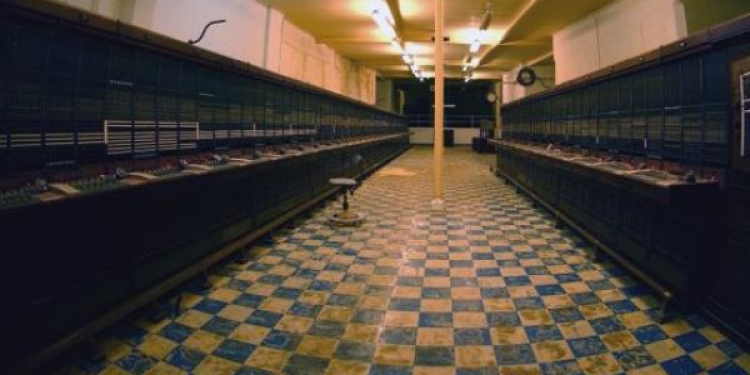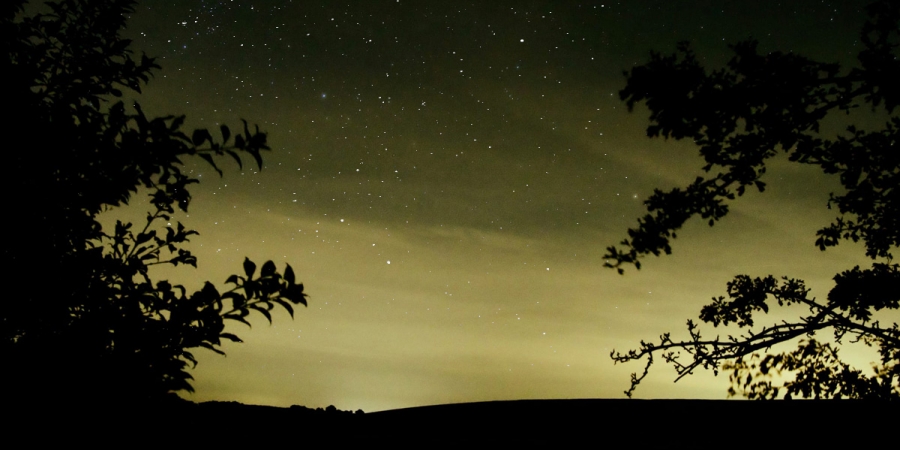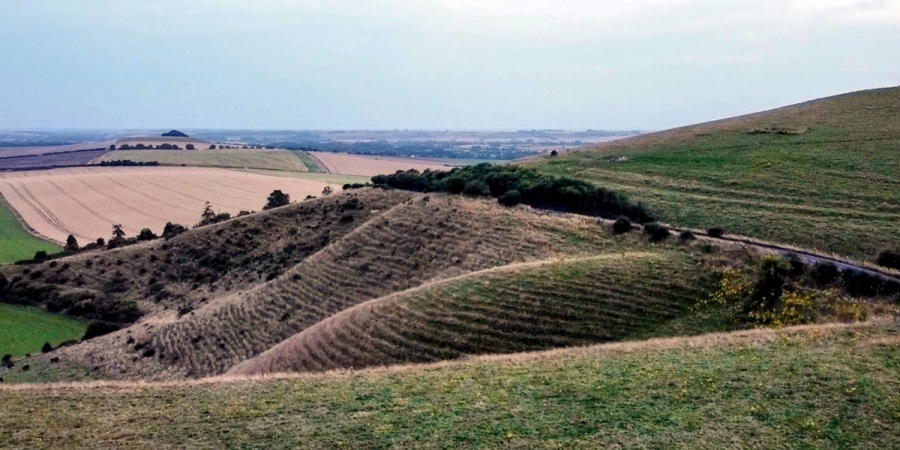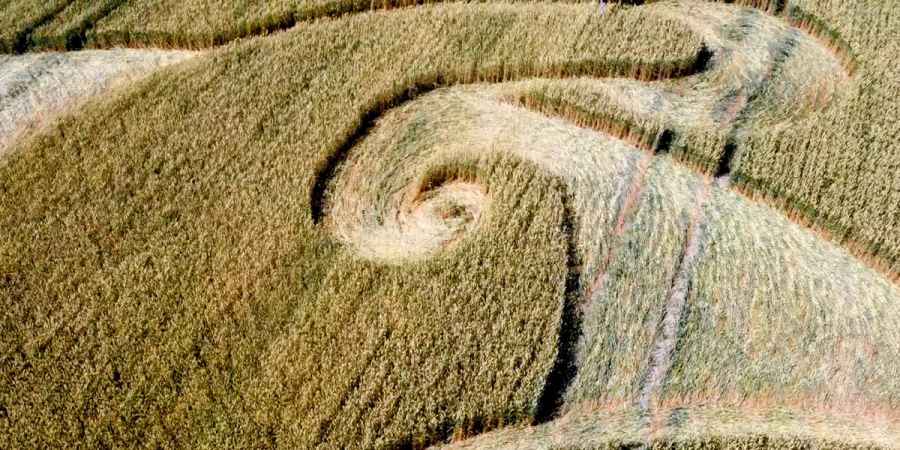
Photo: Crown Copyright

Photo: Crown Copyright
This page is more than ten years old and was last updated in March 2018.
For decades a huge underground nuclear bunker built beneath Corsham in Wiltshire was one of the UK's best kept secrets. In 2004 it was finally declassified and since the details of its existence have been revealed, below is the timeline of the bunker's construction and use.
1940 - Government Acquires Spring Quarry
The Ministry of Aircraft Production acquires a disused stone mine, Spring Quarry in Corsham from the Bath and Portland Stone Company which had been worked for building stone for the last century.
1941 - The World's Largest Underground Factory
Work started in Spring Quarry to convert the stone mine in to the world’s largest underground factory.
1942 - Factory Becomes Irrelevant
The work had not finished on the site and by this stage the threat from German bombing had decreased.
1943 - Factory Conversion Abandoned
Bristol Aerospace Company moved in to the quarry however areas designated for BSA’s gun barrel factory and the Dowty Engineering section were never occupied. The conversion of the Dowty section was never completed.
Advertisement ‐ Content Continues Below.
1945 - Factory Closes
After the Second World War had finish the companies moved out and the factory closed with a bill of over £20,000,000 after having very little use.
1946 - Ministry Of Supplies Take Over
Spring Quarry was passed over to the Ministry of Supplies who used the site for Admiralty stores.
1948 - Government Plans War HQ
Plans for a reserve Emergency Government War Headquarters started to form, codenamed SUBTERFUGE which was to be established outside of London on the West Country.
1950 - Plans For Bunker Layout Complete
Plans for the layout and conversion of the existing factory within Spring Quarry were drawn up.
1954 - Government Purchase Spring Quarry
The government finally purchased the freehold for Spring Quarry from he Bath and Portland Stone Company along with a large area of surface land.
1956 - Corsham To Be Home Of EGWHQ
The government decided to abandon Paddock, the existing emergency facilities in London and develop SUBTERFUGE as the main Emergency Government War Headquarters.
1957 - Conversion Work Begins
Work started on the converting the 2,000,000 square feet area of Spring Quarry, the converted space would make room for over 7000 staff and 1,000,000 square feet of office space. An un-occupied buffer zone was built around SUBTERFUGE to separate it from the rest of Spring Quarry which was still used as Admiralty stores.
1959 - Bunker Takes Shape
The conversion was coming along well, by this time a wide roadway ran through the site with lifts and escalators at either end. Off of the Northern side of the road was the telephone exchange, workshops, air conditioning, catering and domestic facilities. To the south of the roadway were the departmental offices and living areas. In the central eastern area were the Cabinet and executive function areas.
Advertisement ‐ Content Continues Below.
1960 - Finishing Touches
By the beginning of the year all the surface building work was also completed, three huge blast doors were installed underground sealing the emergency exits from the Admiralty stores. Emergency generators had been installed and some of the domestic equipment such as the bakery ovens had been installed but still the bunker still wasn’t completed to it’s original design and it was now a year behind schedule. The Defence Departments called for the immediate completion of SUBTERFUGE. By the end of the year although not complete, SUBTERFUGE could be used.
1961 - Burlington Goes In To Operation
The codename for the Emergency Government War Headquarters was changed to BURLINGTON as the site reached full operation. A report was produced by the Emergency Government War Headquarters Inter-Service Committee detailing staffing and servicing requirements.
1962 - Underground Pub Opens Its Doors
A stylish bar was installed in the bunker with attractive lighting and polished chrome fittings. The bar stocked a range of beers and spirits. The bar is said to have been modelled on the Whitehall pub the Red Lion and was apparently renamed the Rose and Crown as it was more rural sounding. With the Cuban missile crisis looming BURLINGTON was on stand-by, now with very little work left to complete.
1963 - Bunker Gets A Name Change
As the role of the site changed, BURLINGTON got a new codename, this time it was labeled TURNSTILE.
1975 - UKMWO Upgrades
The Emergency Government War Headquarters was given an overhaul as part of the expansion of the UK Monitoring and Warning Organisations. A large section of the bunker was separated from the rest and converted in to a Nuclear Reporting cell which employed 600 staff.
1977 - Project Abandoned
A project to improve access and build a new vertical emergency exit shaft was abandoned.
1979 - Thatcher Makes Changes
Over the next three years the Emergency Government War Headquarters was reduced in size as part of Thatcher’s government’s new aggressive approach to civil defence, despite a decrease in size facilities were upgraded so that it was correctly equipped for it’s new role as a central government command nucleus. These included a new kitchen and generators.
1989 - Bunker Operations Wound Down
The Emergency Government War Headquarters was decommissioned and departments started to leave the facilities and supplies were run down.
1991 - Bunker Emptied But Maintained
Now moth balled, the Emergency Government War Headquarters was finally made redundant, however limited maintenance remained at the site presumably even today.
1992 - PINDAR Takes Over
The new PINDAR bunker was commissioned under the Ministry of Defence building in Whitehall just as the last of the Government facilities left Corsham.
2004 - EGWHQ Declassified
The Emergency Government War Headquarters was declassified are for the first time the Ministry of Defence didn’t deny it’s existence, however little detail still has been released about the current state of the bunker.
© Crown Copyright Notice: Images on this page are reproduced with the permission of the Controller of His Majesty’s Stationery Office.
Further Reading
Dive into the world of the paranormal and unexplained with books by Higgypop creator and writer Steve Higgins.

Alone At The Inn
The full account of a solo paranormal investigation at the Ancient Ram Inn, tied to a documentary film.
Buy Now
Demystifying The Oracle
A balanced look at Ouija boards, exploring whether they are toys, tools, or dangerous occult devices.
Buy NowMore Like This

UnexplainedAugust 31, 2024
Top Skywatching Spots In Wiltshire To Witness The Warminster Thing

ParanormalAugust 27, 2024
Joining The Warminster UFO Skywatchers For A Night On Cradle Hill

ParanormalAugust 16, 2024
Revisiting The Warminster UFO "Thing"

ParanormalAugust 11, 2024
A Trip To Wiltshire's Crop Circles To Meet The People Who Believe In Them
 See More on Audible
See More on Audible
Comments
Want To Join The Conversation?
Sign in or create an account to leave a comment.
Sign In
Create Account
Account Settings
Be the first to comment.